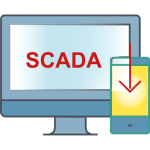
Description
Mocana provides mission-critical IoT security solutions for embedded systems and the Internet of Things. Our IoT security software is used by hundreds of companies to secure millions of devices, controllers and embedded systems.
"Mocana" means to set free, and our mission is to protect countries, cities, and families by enabling devices of every kind to be trustworthy and run securely and freely.
Mocana was founded in 2002 to help protect military aircraft, vehicles, and devices. Our security software protects devices by using cryptography designed to run on microcontrollers and embedded devices. Today, we serve both the defense and commercial sectors. Our comprehensive device-to-cloud platform is integrated with more than 70 chipsets, 30 operating systems and real-time operating systems (RTOS) for wired and wireless networking environments. Our customers and partners include Bosch, Echelon, Emerson, GE Digital, Harris, Honeywell, Infineon, Intel, Kyocera, Panasonic, Samsung, Schneider Electric, Siemens and Wind River. Source: https://www.mocana.com/about
Mocana was founded in 2002 to help protect military aircraft, vehicles, and devices. Our security software protects devices by using cryptography designed to run on microcontrollers and embedded devices. Today, we serve both the defense and commercial sectors. Our comprehensive device-to-cloud platform is integrated with more than 70 chipsets, 30 operating systems and real-time operating systems (RTOS) for wired and wireless networking environments. Our customers and partners include Bosch, Echelon, Emerson, GE Digital, Harris, Honeywell, Infineon, Intel, Kyocera, Panasonic, Samsung, Schneider Electric, Siemens and Wind River. Source: https://www.mocana.com/about


